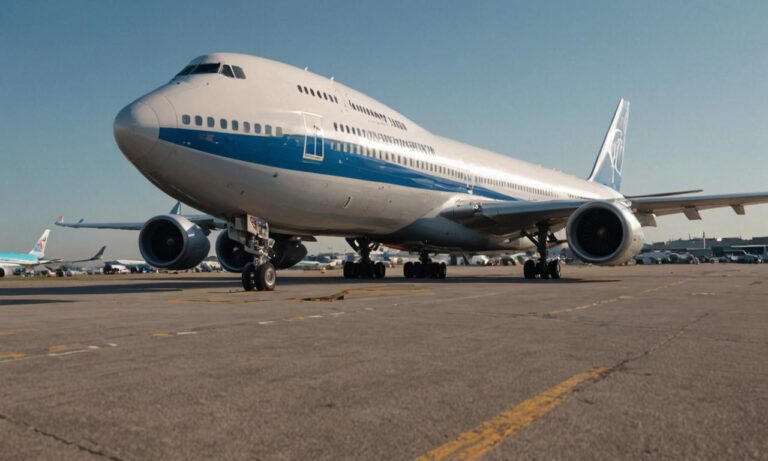When it comes to the dimensions of airplanes, there is a wide variety of sizes and shapes depending on the type and model of the aircraft. The length of an airplane is a crucial aspect of its design, influencing its performance, capacity, and capabilities.
Factors Affecting Length
The length of an airplane is determined by several factors, including its intended purpose, capacity, and aerodynamic requirements. Commercial airliners, military jets, cargo planes, and private aircraft all have different length specifications based on their unique design specifications and operational needs.
Commercial Airliners
Commercial airliners, which transport passengers and cargo across the globe, vary significantly in length depending on their capacity and range. Modern wide-body jets such as the Boeing 747, Airbus A380, and Boeing 777 are among the longest passenger planes, measuring over 70 meters (230 feet) in length.
Narrow-body jets like the Boeing 737 and Airbus A320 series are shorter in length, typically ranging from 30 to 45 meters (100 to 150 feet). These aircraft are commonly used for short to medium-haul flights.
Military Aircraft
Military aircraft come in various sizes and configurations, with lengths tailored to specific mission requirements. Fighter jets, such as the F-16 Fighting Falcon and the F-35 Lightning II, are relatively compact and agile, measuring around 15 to 20 meters (50 to 65 feet) in length.
On the other hand, strategic bombers like the B-52 Stratofortress and transport planes like the C-130 Hercules are considerably longer, often exceeding 50 meters (165 feet) in length to accommodate heavy payloads and long-range missions.
General Aviation
General aviation encompasses a wide range of small aircraft used for personal and business travel, flight training, and recreational flying. These planes vary in length from compact two-seaters to spacious cabin aircraft.
Light aircraft such as the Cessna 172 and Piper Cherokee typically measure around 8 to 10 meters (26 to 33 feet) in length, while larger business jets like the Gulfstream G650 can exceed 30 meters (100 feet) in length, offering luxurious amenities and long-range capabilities.
Importance of Length
The length of an airplane plays a critical role in its performance and functionality. Longer aircraft often have greater seating capacity, larger cargo holds, and extended range capabilities, making them suitable for long-haul flights and missions.
Furthermore, the aerodynamic design of an airplane’s fuselage, wings, and tail is optimized to achieve optimal lift, stability, and fuel efficiency, considering its length and overall dimensions.
In summary, the length of airplanes varies significantly based on their type, purpose, and design requirements. From commercial airliners to military jets and general aviation aircraft, each plane is meticulously engineered to meet specific performance criteria while ensuring safety, efficiency, and comfort for passengers and crew alike.
Fuel Efficiency
Fuel efficiency is a crucial aspect of aircraft design, directly influenced by its length, weight, and aerodynamics. Longer airplanes often have more surface area for streamlined airflow, which can contribute to better fuel efficiency by reducing drag.
Engine technology, wing design, and overall aircraft configuration also play significant roles in enhancing fuel efficiency, with manufacturers continually innovating to improve performance and reduce environmental impact.
Environmental Impact
The environmental impact of airplanes, including factors like carbon emissions and noise pollution, is a growing concern in aviation. Longer aircraft with efficient engines and aerodynamic profiles can help mitigate environmental impact by reducing fuel consumption and emissions per passenger mile.
Additionally, advancements in alternative fuels and sustainable aviation initiatives aim to further reduce the environmental footprint of air travel, promoting greener and more eco-friendly practices across the industry.
Technological Advancements
Advancements in technology continue to shape the design and capabilities of modern aircraft, influencing their length, performance, and operational efficiency. Cutting-edge materials, avionics systems, and propulsion technologies enable manufacturers to push the boundaries of innovation in aerospace engineering.
From composite materials that offer strength and weight savings to advanced fly-by-wire systems that enhance control and safety, ongoing research and development efforts drive progress in aviation, paving the way for more efficient, sustainable, and versatile aircraft designs.
Frequently Asked Questions
| Question | Answer |
|---|---|
| How does aircraft length affect performance? | Aircraft length influences factors such as capacity, range, and aerodynamic efficiency, which collectively impact performance during flight. |
| What are the environmental considerations in aircraft design? | Environmental considerations include fuel efficiency, emissions reduction, and noise abatement strategies to minimize the environmental impact of air travel. |
| How do technological advancements shape the future of aviation? | Technological advancements drive improvements in aircraft efficiency, safety, and sustainability, shaping the future of aviation through innovation and engineering excellence. |






